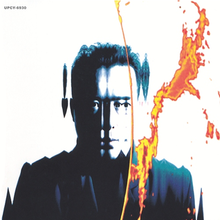Aurora (Susumu Hirasawa album)
| Aurora | ||||
|---|---|---|---|---|
 |
||||
| Studio album by Susumu Hirasawa | ||||
| Released | February 25, 1994 | |||
| Recorded | 1993 | |||
| Studio | ||||
| Genre | ||||
| Length | 60:11 | |||
| Label | Polydor K.K. | |||
| Producer |
|
|||
| Susumu Hirasawa chronology | ||||
|
||||
Aurora is Susumu Hirasawa's fourth solo album.
His first main solo album in three years following a period where focus was directed on the Defrosted P-Model, Aurora, which Hirasawa has said can be considered a second solo debut, is a turning point in his career. Unlike the previous solo albums, Aurora doesn't feature guest musicians, with almost all instrumentation handled by MIDI-compatible devices. The music was composed with the Amiga The Blue Ribbon SoundWorks programs Bars & Pipes Professional, which he started using for "more natural orchestration", and SuperJAM!, whose "Bartok" style he modified by inputting data from his own songs, irreversibly turning its patterns and variations into "Hirasawa" style ones.
Aurora was created to appeal to the instinctual side of the listener as opposed to the logical, in likeness to tales and myths, emphasizing vocals and melody. The songs were written so that the album would lack any inherent story or concept, inviting the listener to create their own reading. However, as he wrote the lyrics out, seven of the album's ten songs ended up having to do with "you" (キミ kimi?), which accidentally created undertones of a story about two people. Hirasawa wanted to avoid that if at all possible, but felt that was just the way the language worked and left it as is. Many words representing natural phenomena were included in an attempt to resolve complaints about the lyrics being opaque. Hirasawa chose words that were easy to understand and had a large impact, the word Aurora came from this decision as well.
The album's booklet is adorned with Buddhist imagery. Advertisements for Aurora used the phrase "The Greatest Music of All" (至高の音楽 Shikou no Ongaku?).
...
Wikipedia
